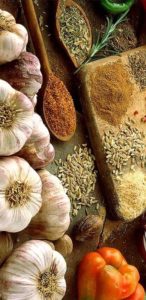Without a doubt there are natural remedies for almost all ailments or illnesses However there are a great many myths about miracle cures for acne, back pain, arthritis and so on Often you will be better saving your money and using natural methods for your aliments, aches and pains.
From our list of herbs and spices, the following are recommended for Hair:
Scroll down for links.
- Black Castor Oil
- Black Seed Oil
- Evening Primrose Oil
- Saw Palmetto
- White Oak Bark
Natural Cures and Remedies for Hair
Recently Viewed
Home Remedies Allergies
Home Remedies Diabetes
Hair Loss Remedies
Home Remedies Diaper Rash
Home Remedies Cramps
Home Remedies Eczema
Home Remedies Blood Pressure
Home Remedies For Weight Loss
Home Remedies Fever
Gas Remedies
Home Remedies For Tinnitus
Hay fever Home Remedies
The paste of henna leaves, boiled in coconut oil to get a darkish oil, can be used as a hair dye to blacken grey hair. The paste itself can be applied to the hair and washed away after a few hours to dye the grey hair. Washing the hair with concentrated tea extract twice a week is also considered useful in colouring grey hair to brown or black.

Poisons and toxins admitted into the body through food, beverages and water, as well as through breathing, polluted air, can cause any number of disturbances. A headache may be the first warning that a poison has entered the body. Additives in foods and in many cases, cosmetics, skin and hair products are also serious offenders in bringing on headaches. IN
Flaxseed, Ginkgo Biloba, He Sho Wu, Hibiscus, Horsetail, Omega-3 Fatty Acids, Soy
Lack of inositol causes loss of hair. Any person having trouble with his or her hair should eat foods rich in inositol such as yeast, liver and molasses. Research has, however, shown that women have a low requirement of inositol. Although this vitamin may help to stimulate the growth of a woman’s hair, its lack is probably not a major cause of slow growth . Women are generally deficient in iodine and vitamin B1, either of which can slow down circulation to the scalp to such an extent that hair may fall out and new hair grow in very slowly. Women who keep their diets adequate in iodine, the B vitamins and iron have a better growth of hair.
Several home remedies have been found useful in the prevention and treatment of the loss of the hair. The most effective among these remedies is a vigorous rubbing of the scalp with fingers after washing the hair with cold water. The scalp should be rubbed vigorously till it starts to tingle with the heat. It will activate the sebaceous glands and energise the circulation of blood in the affected area, making the hair grow healthy.
Hair is formed in minute pockets in the skin, called follicles. An upgrowth at the base of the folic, called the papilla, actually produces hair ; when a special group of cells turn amino acids into keratin, a type of protein of which hair is made. The rate of production of these protein ” building blocks.” determines hair growth. The average growth rate is about 1.2 cm per month , growing faster on women between the ages 15 and 30.
Black Castor Oil
Black Seed Oil
Evening Primrose Oil
Saw Palmetto
White Oak Bark
Contraindications, Interactions, and Side Effects (Kava) – Class 2b, 2c, 2d. Contraindicated for endogenous depression (AHP). Maximum tolerated doses for dogs was 60 mg/kg, for rats 320 mg/kg StX (70% kavapyrones). Perversely, if the authors didn’t misspeak, the dogs tolerated 24 mg/kg/day. Of >4000 patients taking 105 mg/day StX (70% kavapyrones), 1.5% had objectionable side effects (allergy, dizziness, GI distress, and headache). At levels 100 times the therapeutic dose (roughly 13 liters kava beverage a day or 300-400 mg rhizome per week) caused anorexia, ataxia, dyspnea, hair loss, red eyes, skin rash, visual problems, and yellow skin. “There is no potential for physical or psychological dependency. Use should not exceed 3 months.” (AHP) Germans limit use to 1-3 months (AHP). Commission E reports contraindications: esophageal and gastrointestinal stenoses; adverse effects: allergic reactions (rarely). Other sources report intestinal obstruction (AEH). Many reports suggest a yellowing of the skin in chronic users. “Chronic ingestion may lead to kawism’ characterized by dry, flaking, discolored skin, and reddened eyes” ( LRNP, May 1987). Persistent rumors suggest that overdoses can cause intoxication. Commission E warns against the concomitant use of kava with barbituates, antidepressant medications, and CNS agents. Lactating or pregnant women should not use kava (WAM). “Not permitted as a non-medicinal ingredient in oral use products in Canada” (Michols, 1995). Abuse by Australian Aborigines suggest links to hematuria, infectious disease, neurological abnormalities, pulmonary hypotension, nephrosis, visual disturbances, ischemic heart disease, thrombosis, and sudden heart attacks (MAB). The following quote might scare abusers, as it should, “Full consciousness is maintained with even fatal doses” (APA, quoting Weiss, 1988).
